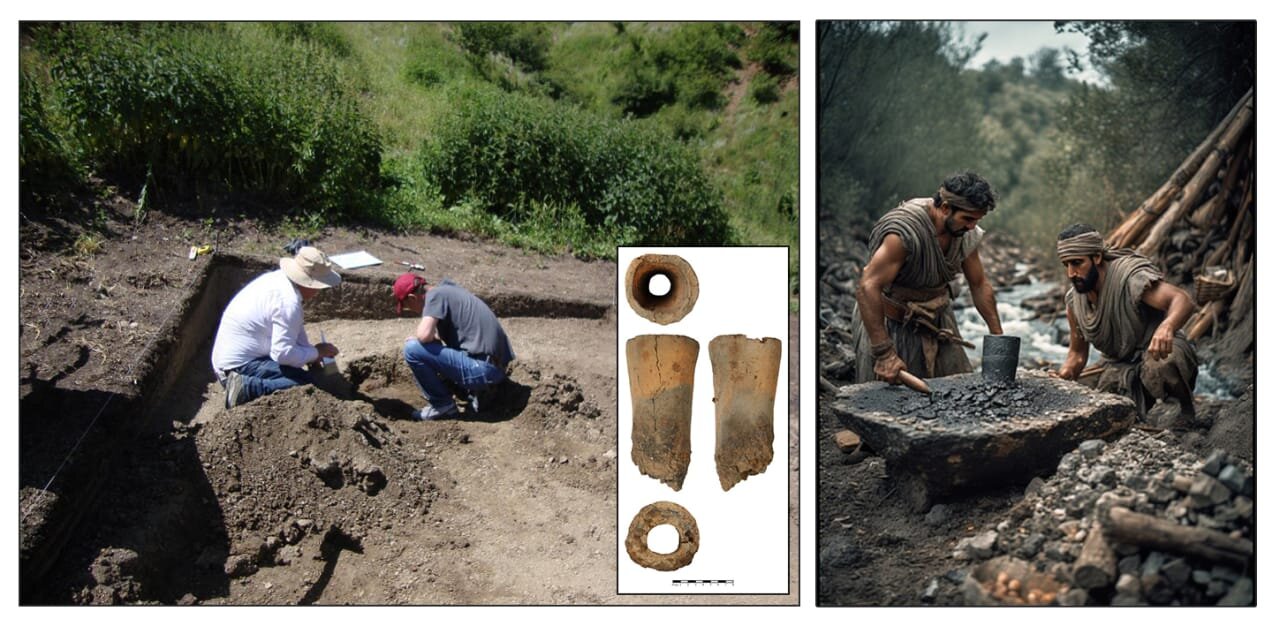Early Islamic metallurgical complex discovered at Masouleh; strengthens revised World Heritage file

TEHRAN - A joint Iranian-Chinese archaeological team has uncovered a significant early Islamic-era settlement and a sponge iron smelting workshop at the Khanbaji Sara site within the Cultural Landscape of Masouleh in northern Iran.
The discovery directly supports urgent efforts to strengthen Masouleh’s UNESCO World Heritage nomination following its 2023 deferral by the World Heritage Committee in Riyadh. The deferral resulted primarily from ambiguities regarding the site’s Outstanding Universal Value (OUV), particularly inadequate documentation of its unique metallurgical heritage.
The collaboration involves Chinese archaeologists from the Academy of Archaeology partnering with Iran’s Research Institute of Cultural Heritage and Tourism (RICHT), formalizing ties based on historical Silk Road connections between Hyrcanian area (Gilan & ...) and East Asia.
During two fieldwork seasons, the team revisited metallurgical sites originally documented by Fereidoun Biglari of the National Museum of Iran. Six sites were selected for geophysical surveys by Shahid Beheshti University experts. These revealed substantial subsurface evidence of iron production, establishing that Masouleh’s landscape was shaped by complex industrial activity evolving from Parthian and early Islamic times through the Qajar era, forming a network of satellite sites around the historic city. In addition to the previously mentioned iron smelting sites, a large complex of workshops was recently documented at Gilevand Rud. This discovery further reinforces the industrial scale of Masouleh’s metallurgical landscape and necessitates a revision of the proposed core zone for world heritage by Iranian cultural heritage authorities to incorporate this significant site complex.
The second season focused on Khanbaji Sara, confirming its significance as an early Islamic to Seljuk-period industrial settlement. Excavations demonstrated continuous technological evolution within a regional smelting network centered on Kohneh Masouleh. A key trench revealed evidence of all four iron smelting stages alongside silica glass and copper residues in a centralized waste depot. Substantial iron slag volumes and ceramic equipment indicate centuries of workshop operation. These findings illuminate the evolutionary process of multi-stage furnaces within Masouleh’s cultural landscape, with Khanbaji Sara’s early forms preceding the more advanced designs later employed in Kohneh Masouleh and the historic town center. Crucially, they address the nomination’s original deficiency by demonstrating Masouleh’s technological significance through its multi-stage sponge iron furnaces—a core component of its revised OUV argument.
The nomination of the Cultural Landscape of Masouleh was deferred at the 2023 session of the UNESCO World Heritage Committee held in Riyadh, Saudi Arabia. The decision was mainly due to ambiguities regarding the Outstanding Universal Value (OUV) of the site. While there had been significant support among committee members for a “referral” decision, the lack of evidence in the initial and main file made a procedural change of decision challenging.
The initial preparation of the file coincided with a change in the Iranian government and leadership within the Ministry of Cultural Heritage. As a result, the dossier lacked coherence, with essential documentation missing and multiple, sometimes conflicting narratives presented. Most critically, the technological and historical significance of Masouleh’s multi-stage sponge iron smelting furnaces — a core component of its potential OUV — was underrepresented.
In response, Iran’s Cultural Heritage Deputy formed a dedicated revision team. Heeding ICOMOS recommendations for international collaboration, Iran secured a partnership with China’s Academy of Archaeology for archaeological investigations, with Iran’s National Museum and Center for Archaeological Research leading domestic efforts. The revised strategy leverages the Khanbaji Sara findings and ongoing interdisciplinary research to articulate the region’s technological significance and how this industrial legacy shaped Masouleh’s cultural landscape.
With continued research and international collaboration, the revised file aims for successful inscription at a future World Heritage Committee session.
AM
Leave a Comment